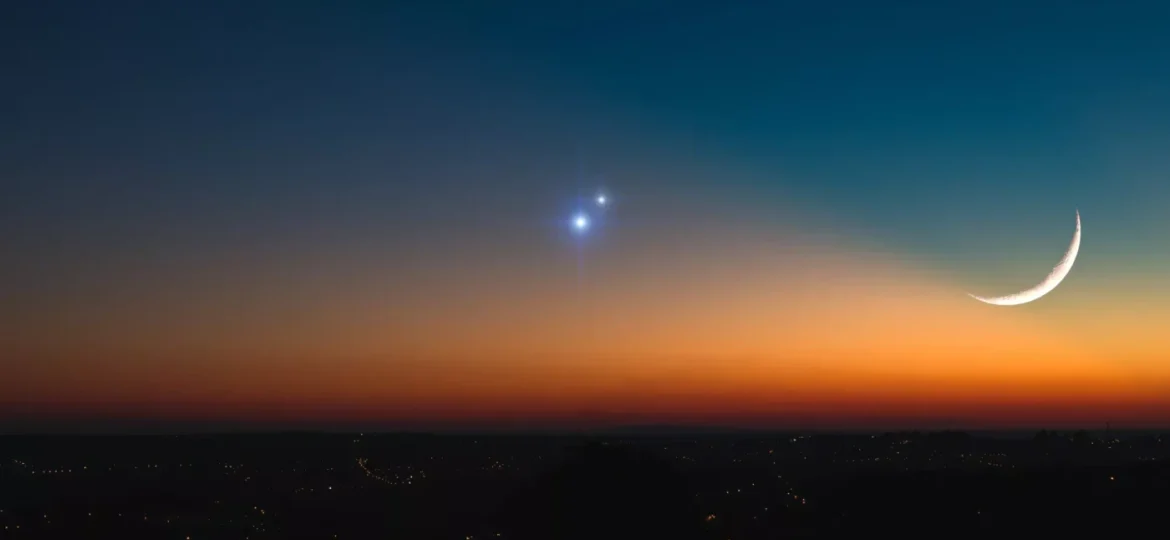
On March 1 and 2, Jupiter and Venus will appear side by side in the night sky in an event called a conjunction, which is visible without a telescope or binoculars.
Jupiter, the largest planet in the solar system, and Venus, one of the brightest objects in Earth’s sky, will come within about half a degree of each other — or roughly one full moon’s width apart. For weeks, the two bodies have been inching closer together, building toward a phenomenon called a conjunction, which occurs whenever two objects in the sky — such as moons, planets or stars — appear exceptionally close together.
This phenomenon is, of course, a trick of perspective. The two bright planets are in fact millions of miles apart; only from our point of view on Earth do they appear to butt against each other. Thanks to the orbital patterns of Earth, Jupiter and Venus, conjunctions like this occur once every year or so.
You won’t need a telescope or binoculars to see the two bright planets. Simply look to the west after sunset, and the two canoodling objects should be apparent to the naked eye. They will look like exceptionally bright stars; Jupiter will shine twice as bright as Sirius, the brightest star in the sky, while Venus will blaze six times brighter than Jupiter, according to Live Science’s sister site Space.com(opens in new tab).
However, skywatchers who do view the planets through a pair of binoculars may have the bonus of seeing three of Jupiter’s largest moons: Io, Ganymede and Callisto. If you want to pick up a pair of binoculars to see the conjunction more clearly, check out our guide to the best binoculars for stargazing for our recommendations.
The two planets will be separated a bit too widely to appear in the same field of view of a telescope, according to In-The-Sky.org(opens in new tab).
If you can’t catch this spectacle in the sky, you can watch a livestream of the conjunction, as seen from Rome, courtesy of the Virtual Telescope Project(opens in new tab). The stream begins at 1:30 p.m. EST (1830 GMT) on March 1.


Not sure when anyone else received this Newsletter but I only received it at 0800 this morning, 6 March. As it is written in the future tense, with subject for 1/2 March I suggest it was released some days ago.
Hi Rachel – this post was uploaded by our Boating Office earlier this week and was sent out in the weekly auto-newsletter on Monday 6 March at 0800hrs as normal. The auto-newsletter picks up any articles posted during the previous 7 days.
Hi CBY / Hugh / Rachael that’s an interesting post put out. Can someone put me in the right direction in relation to the advert.
Gordi is not being sailed this year in Regatta and I would be interesting in speaking to the owner and CBYA member.
Available on 669604614
Gordon.